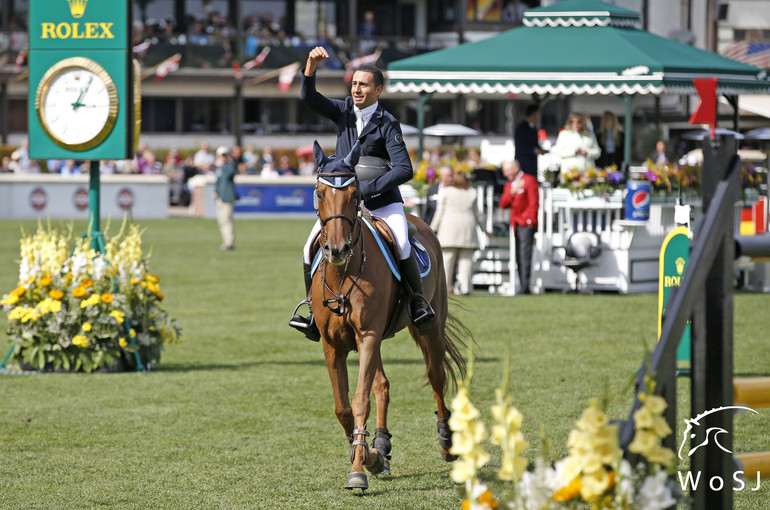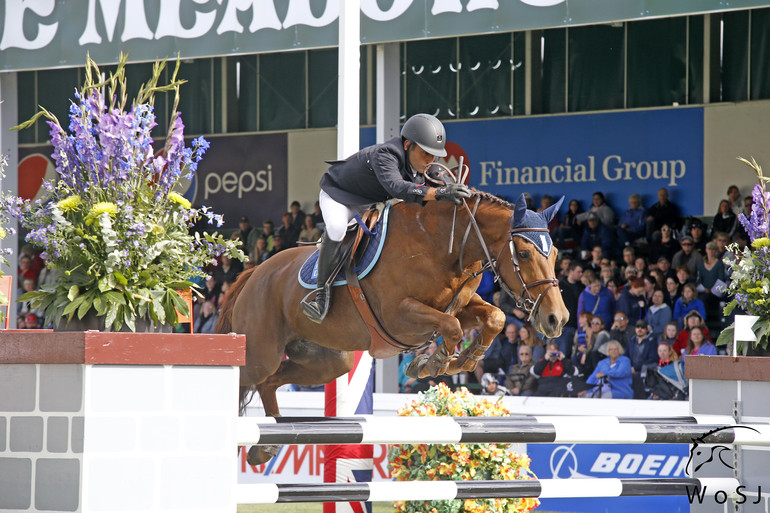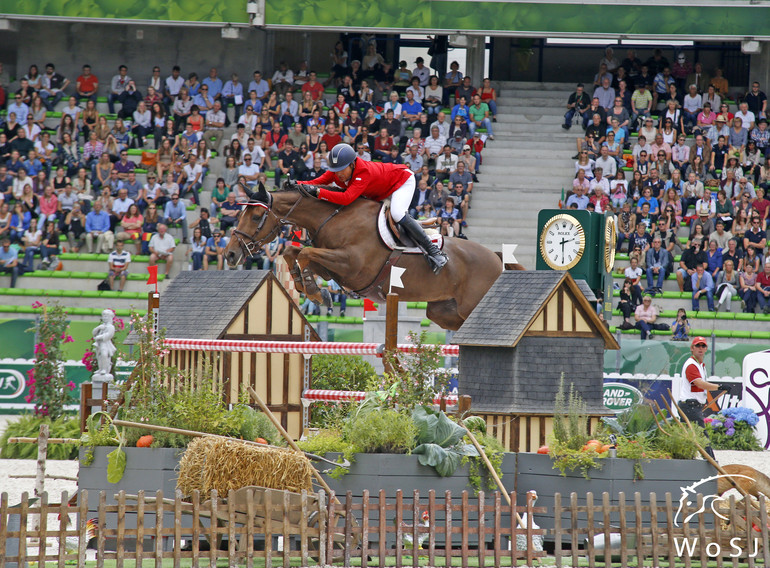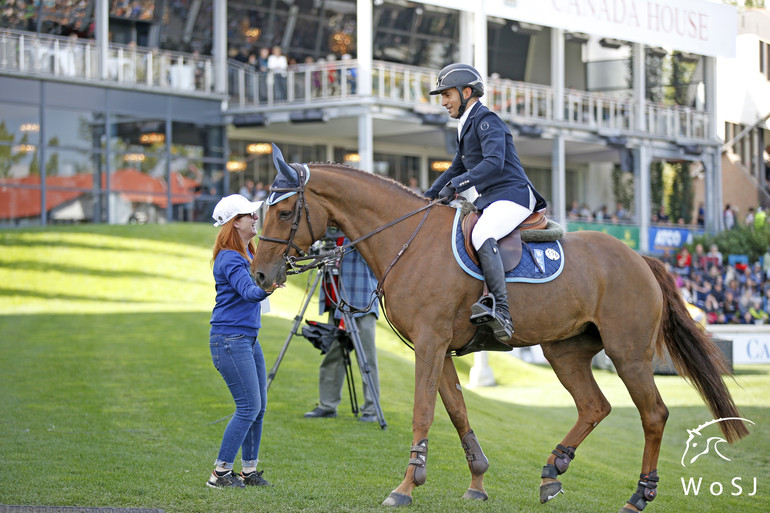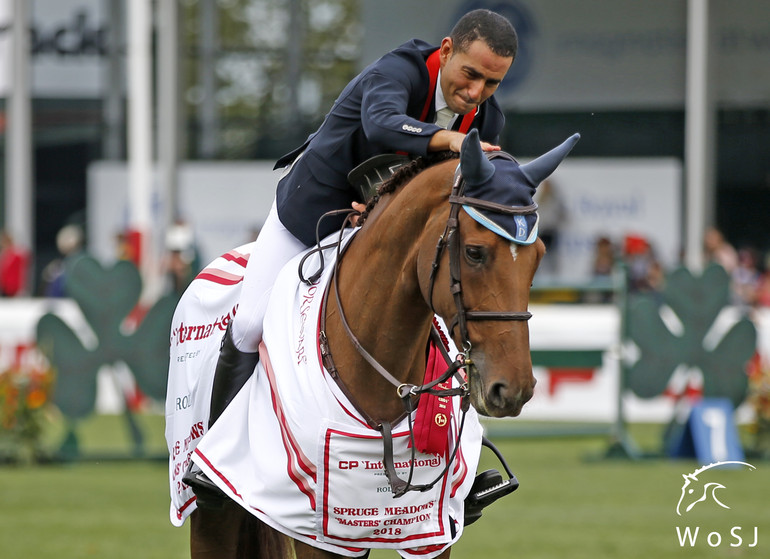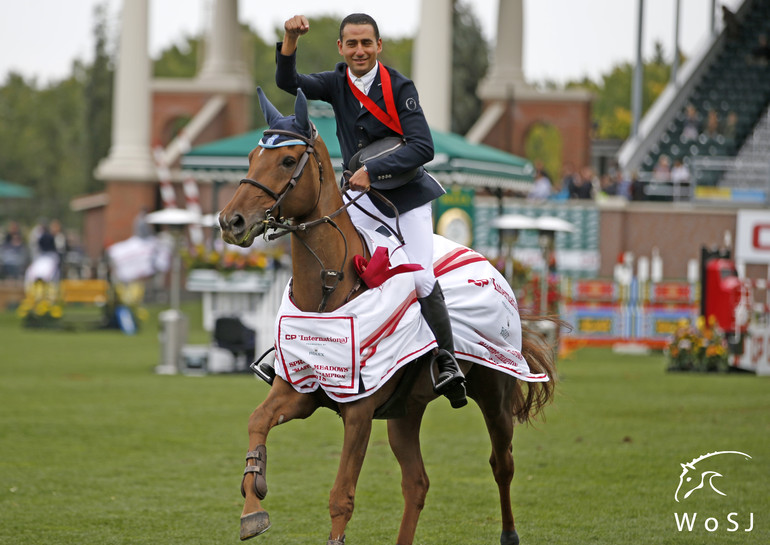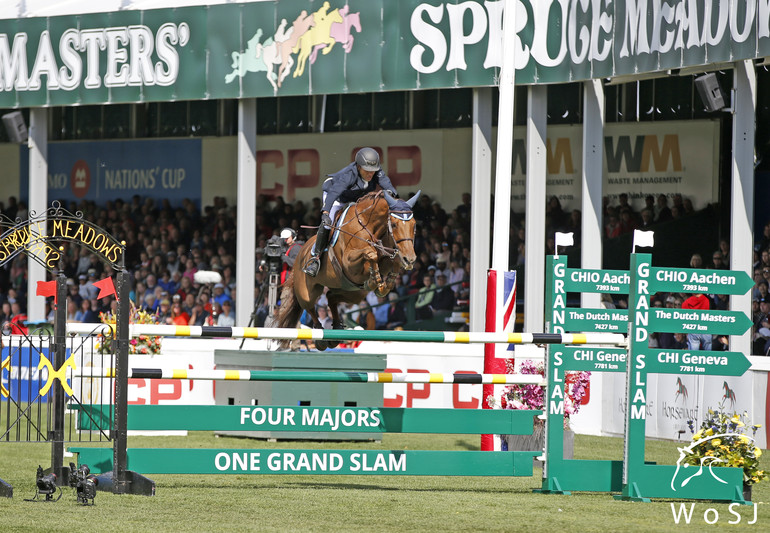Text © World of Showjumping
In our series ‘Still going strong’, we get to know more about the oldest four-legged super-stars that are still active in the sport as 17- and 18-year-olds. What does it take to keep these seniors fit to compete at the top of the sport, and what programs have they had throughout their careers? This time, WoSJ speaks with Sameh El Dahan, Joanne Sloan-Allen and Suma Stud’s Marily Power about the incredible Suma’s Zorro (Douglas x Horos XX).
With Sameh El Dahan in the saddle, the now 18-year-old mare has jumped at two World Equestrian Games: In Caen in 2014 and in Tryon in 2018. The pair topped the Longines Grand Prix of La Coruña in 2017 as well as the Longines Global Champions Tour Grand Prix of Paris in 2018, but the most memorable victory of all came in September 2018, when they won their first Major: The ‘CP International’ presented by Rolex at Spruce Meadows.
A feisty little thing
“Zorro’s great-great-grandmother was a pony called Royal Penny,” Zorro’s breeder Marily Power from the Suma Stud in Kilkenny, Ireland, tells. “She was a smashing little pony. In those days you could ride a pony in any of the classes, including the open jumping and she used to compete against full sized horses and she always held her own. She won everywhere! She needed a skilled rider but then would do whatever she was asked. When she got older, her owners were offered a lot of money from the States to buy her, but they would not sell. Instead, they gave Royal Penny to my partner Susan – who used to compete her – and her family.”
“The place we were at belonged to my mother and as she got older, we had to move and discontinue the stud. We arranged a big sale and all our horses that were under a certain age, were sold,” Marily tells. “At that sale there was a foal by Douglas – and that foal was Zorro, who was bought my Joanne that day. Joanne brought her home and as the ramp went down, Zorro got off and jumped a five bar gate – so Joanne knew she had bought something special! She was a feisty little thing. One never expected what happened with her, she has just outdone herself.”
“Following Zorro has been brilliant,” Marily continues. “I have never gone abroad to see her, but we followed everything. I think Zorro will go on and keep competing with one of Joanne’s children, just to give them the feel of it: She is a really competitive mare, she loves to compete. All Irish breeders follow her, she is a special little lady. It would be easy for me to say that she was planned to be absolutely special, but she wasn’t – we knew there was ability in the family but we could never claim she was the pinnacle of our breeding. She turned out to be, but if she didn’t end up with Joanne and Sameh, I think it would have been a different story; she would not have done everything for just anybody. She needed time and they have done a marvelous job. Sameh has suited her perfectly, while Joanne has ridden her a lot too. Zorro has been kept going by careful management.”
Field time and fitness
“The main thing with Zorro has been keeping her really fit,” Joanne Sloan-Allen says. “Obviously, when horses are older, they need to be fitter, because it is harder to build them up again if they lose their fitness. We have done this with a varying sort of workload. She does not really jump at home; she goes to the field, works on the flat and hacks around the roads. Every day, she has something different to do in addition to a lot of field time – that is important for her. At the moment she is working on the water treadmill: We have a rehabilitation centre close to us with great facilities and we send the horses over for a few weeks at a time. It is a different type of work for them.”
“Although she has a lot of field time, we don’t really give her breaks where she is fully out of work because we don’t think it’s good for her body,” Sloan-Allen continues. “We try to plan her jumping so that I will do some smaller classes which are just fun for her, and then Sameh does the bigger classes. This year, I think we will probably do that even more. There will be one or two shows that will be our priorities: She will do a maximum of three to four bigger shows this year, that is our plan with her for now.”
All the horses at Sloan-Allen’s Sycamore Stables are checked every four to five weeks by a veterinarian. “We are proactive and very into alternative medicine. We have been lucky with Zorro, she has been very healthy but I think it is partly because we have always been on top of things and found any issues before they got major. Our horses also use the Bemer-system, we use nebulizers, and for us icing the horses’ legs properly is really important. We also use magnetic rugs, cryotherapy, and a salt room if needed. I think all of this is important for horses like Zorro, to keep them sound for longer.”
Horse of a lifetime
“For me, Zorro is a horse of a lifetime and I have to mind her, she owes me nothing,” Sameh El Dahan fills in. “She is a competitive horse that likes to show and compete. During the first lockdown, when she was not going anywhere and we took the younger horses for training shows, she was kicking in the box – and she is not a kicker. She is itching to go and compete. I am sure that she is going to tell me when she wants to retire, but I don’t think it is her time yet. Whenever I take her to the ring, I am competitive, because she is. I always follow Zorro, it is not the other way around – I go with the feeling she gives me.”
With such a competitive attitude, keeping Zorro in a good mood is very important to El Dahan. “Zorro does everything from her heart and mind,” he says. “You can’t make her do things, she jumps because she loves it. She has to be mentally fit and positive in her thinking, which is what we have always paid attention to. We make sure to always do different type of work with her so that she never feels under pressure. This way, when she goes to a show, she is fresh and ready to go.”
“I think consistency is a big thing in showjumping,” El Dahan continues. “If you look at the best results, those are always reached by a horse-and-rider combination that has known each other for a long time. That special partnership is what I have with Zorro. Obviously, consistency in staying in the same stable and the same system has been an advantage; she has only had me or Joanne riding her since she was seven. I think this is very important; our sport is all about a partnership.”
“I think it is important to look at the horses’ career as a whole. When I look back at my career with Zorro, I could not be prouder and happier of what we have done,” El Dahan says.
A responsibility towards the horse
“There are some riders who only see a horse’s career as a limited amount of time and during that time they show a lot,” Sloan-Allen says. “The horse might have a successful career, but a short one. At the end of the day, we are not in a position to keep changing horses and buying new ones, so for us longevity is the most important thing. Also, I believe we have a responsibility for the horses as an animal: We have to look after them and not over-use them. For us, each horse has a number of annual shows we feel is enough for them. It is not up to me to dictate others on how they should run their yards and manage their horses, it is personal thing. Me and Sameh share the same morals and our thought is that the horses should be having fun, they should not be over-jumped.”
“I think there is a lot of jumping for young horses and I get it, because obviously clients want to see results,” El Dahan continues. “It is a difficult situation riders have been put into; they need a certain amount of results to be able to sell a horse for a decent amount of money. It is a hard equation, but I feel that if you want a horse to perform at an older age – where they actually are capable of jumping those big classes – the less jumping they do as young horses, the better. Obviously, that is not a rule as every horse is different but I believe that as a rider you should focus on keeping the end goal in mind: Every rider is aspiring to jump those five-star Grand Prixs and championships. We are in a lucky position where we can give our horses time.”
“Our horses are mostly home-bred, so we are lucky to have a system where they are not rushed as youngsters,” Sloan-Allen continues. “They get started, they go back to the field; until they are six, our horses do very little. Once they become eight or nine, we don’t actually give them long breaks without work anymore, because we don’t think it is good for their muscles. Instead, they do a period of shows, then have a few weeks of down time and then go back to light work. The younger horses will have breaks of at least two months at a time in the field until they are six or seven. Again, we are in a privileged position to be able to do this because we are breeders and producers, so we have it all in one yard. Not everybody has this luxury and I understand that.”
One more go at Spruce Meadows
“For me, the biggest achievement with Zorro was winning at Spruce Meadows,” El Dahan says. “That is a Grand Prix I have dreamed of just competing in, winning was not even in my mind. It was a major thing for all of us; for my career, for Joanne and for the whole Sycamore Stables. It was the highlight of our careers so far and it is a day I will never forget. I call Zorro ‘the little lion that could’ – because she can do anything. When you look at her, she is small and tiny, but she can jump the biggest Grand Prix in the world: She proved that when winning at Spruce Meadows. Everyone keeps asking who is going to be my next Zorro and my answer is that there is no such thing. She is the horse of a lifetime for me and what she has done for me and my career cannot be put into words.”
“I would love for Zorro to go back to Spruce Meadows; I would love for her to finish her career there,” Sloan-Allen says. “If we can arrange for her to go there in September, she will tell us. If she is not able to jump the biggest classes there, she won’t do it – she can also just go there and have a bit of fun.”
“Covid has really messed everything up for everybody: I think there are a lot of horses at the same age as Zorro and now their careers kind of fizzled out rather than going out with a bang. If we can just get one last go at Spruce Meadows and retire her there, that for me would be an absolute dream. We have talked about this, it is our dream and aim for the year, but whether it happens or not, we just don’t know. We know that Zorro will tell us,” Joanne says.
“She has done so much for Irish breeding as well,” Sloan-Allen concludes. “She has led the way. For a while, Ireland dropped away in terms of breeding and now if you look at the rankings, many Irish horses are coming through again. I do think Zorro had a lot to do with that, because she gave people hope. It has been my dream for my own breeding program as well, to have bred a horse like Zorro one day.”
No reproduction without written permission, copyright © World of Showjumping.com



